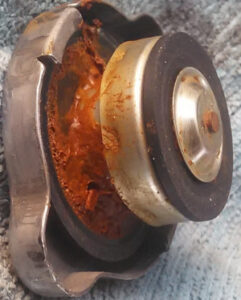What does a radiator cap actually do?
Alright, so you’ve just popped the bonnet on your Toyota Corolla, or maybe your Suzuki Swift, and you’re having a quick squiz because something just doesn’t look right. Maybe the temp gauge’s been a bit higher than usual, especially after crawling through traffic on Te Rapa Road or bouncing over a few too many potholes out in Morrinsville. Most folks don’t give the radiator cap a second thought, but here’s the thing – that little cap’s actually a key player in your car’s cooling system.
Your radiator cap is what helps the whole engine keep its cool. Bit like a bouncer at the club – it decides when to let stuff in and when to let stuff out. The radiator is there to take the heat away from your coolant (that green or pink stuff you see in the bottle). As the engine heats up – and trust me, it will, especially in Hamilton’s stop-start traffic near the Base or on Grey Street in winter – the coolant gets hot. That builds up pressure, and the cap’s job is to hold that pressure at just the right level. If it gets too much, the cap lets a bit of coolant overflow into the expansion bottle, usually tucked off to the side.
If your radiator cap isn’t doing its job, you’ll likely end up stuck on State Highway 3 with clouds of steam coming out from under the bonnet, and nobody wants that.

A rusty radiator cap.
Why do radiator caps get rusty – and how do you spot it?
So, why’s your radiator cap starting to look like an old anchor pulled out of Raglan harbour? Easy – most of them are still metal, inside or out, even if the radiator itself now often has a plastic top. Hamilton’s a damp climate, especially around Ohaupo or Tamahere when we get those thick winter fogs. All that moisture and temperature change can speed up rust, especially if you’ve been topping up with tap water instead of proper coolant.
Checking’s pretty easy and you don’t need fancy gear. Make sure the engine’s off and cold (seriously, don’t burn your hands like one of our techs did last winter), then pop the bonnet and have a nosey at the cap. If you see a heap of flaky orange-brown rust on the cap or around the radiator opening, that’s not a good sign. Take the cap off gently – if the fluid underneath is looking brown and gross instead of clean green or pink, you’ll want to come in. That’s rust in your whole system.
Honestly, half the Nissan X-Trails and a few old BMWs we see coming from places like Cambridge or Ngāruawāhia have done a few too many top-ups with tap water. Best to always use a decent coolant and distilled water combo.
Why bother fixing a rusty radiator cap?
You might think, “Aw, it’s just a bit of rust.” But a rusty radiator cap is more than just ugly – it can cost you a lot more if ignored. That rusty cap can stick, fail to seal, or jam up the pressure valve. If it sticks shut, the pressure just keeps going up until something goes bang or leaks out – seen it plenty of times with a Honda CRV or the odd Peugeot.
Ignoring it means your engine could overheat. No joke, we’ve had someone from Huntly roll in with head gasket issues from a dodgy radiator cap. Way more expensive than just sorting the cap! Plus, the cap isn’t just about pressure – it’s your system’s safety valve. Needs to be in decent nick.
Rust’s not the only drama – we sometimes see caps that’ve lost their spring or don’t seal from age. You can check other signs of a bad cap or dodgy cooling system here.
Need a hand with a rusty radiator cap in Hamilton?
If you’re noticing rust, brown coolant, or just want some peace of mind before your WOF Hamilton check, we’re here for you. At Grimmer Motors we’ll check, pressure test, and swap your radiator cap if it’s looking shabby, whether you’re driving an old Subaru Outback or a newer Kia Sportage.
For Hamilton, Te Awamutu, or even Rototuna locals, proper cooling system care keeps your car running happy through hot summers and frosty mornings. Book in for a car service Hamilton locals trust and we’ll sort your radiator cap, flush your coolant, whatever you need.

